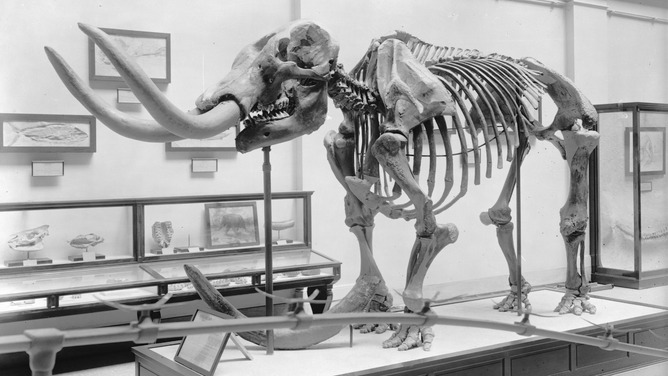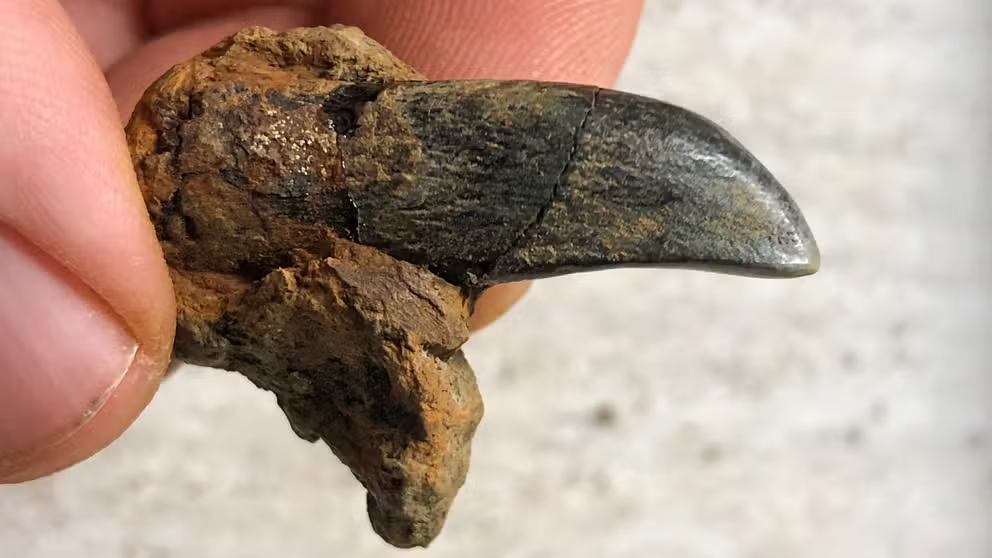Archaeologists unearth 13,000-year-old mastodon skull in Iowa
Radiocarbon dating of the skull revealed that it is about 13,600 years old. UI officials noted the significance on this date, as it overlaps with human occupation of the area.
How kids at Dinosaur Park are finding bones with help from the rain
Located in Laurel, Maryland, Dinosaur Park is an outdoor laboratory where paleontologists, park visitors, and the weather combine forces to discover hundreds of fossils.
A mastodon skull estimated to be thousands of years old was recently found in Wayne County in southern Iowa, University of Iowa officials announced. They noted that the discovery is the first well-preserved mastodon skull scientifically excavated in the Hawkeye State.
Measuring about 10 feet tall at the shoulder and donning upward-curving tusks, mastodons are an ancient species that looked much like their distant cousins the mammoths and elephants, according to the National Park Service.
University of Iowa officials said the animals lived in North America from about 3.5 million years ago to 10,500 years ago.

Mastodon skull.
(Kirk Murray / University of Iowa / FOX Weather)
Radiocarbon dating of the skull revealed that it is about 13,600 years old. UI officials noted the significance of the date, as it overlaps with human occupation of the area.
WHERE DINOSAUR BONES ARE REVEALED BY THE WEATHER
"We’re really hoping to find evidence of human interaction with this creature — perhaps the projectile points and knives that were used to kill the animal and do initial butchering," said John Doershuk, director and state archaeologist at the University of Iowa Office of the State Archaeologist. "There’s also potential evidence on the bones themselves — there could be identifiable cut marks."

Mastodon skull.
(Kirk Murray / University of Iowa / FOX Weather)
In addition to a skull, other bones were first discovered in Wayne County.
UI officials said a local resident notified state archaeologists in fall 2022 that someone they knew came across an exceptionally long bone embedded in a creek bed. Upon further discovery, archaeologists found that bone to be a mastodon femur.

Aerial shot of the excavation site.
(Kirk Murray / University of Iowa / FOX Weather)
Archaeologists returned to the site in the fall of 2023 and found a broken tusk embedded in the creek bed, as well. This caused them to believe the tusk was attached to a mastodon skull.
This month, they further excavated the site and found the skull they were looking for. They also excavated several other mastodon bones, which are believed to be from the same animal.
Archaeologists also discovered human artifacts at the site. Although they date to a few thousand years later than the mastodon skull, IU officials said their discovery is significant, as it is the first record of human existence in the creek drainage.

FILE: Complete mastodon skeleton on display.
(Smithsonian Institution / FOX Weather)
The mastodon skull and its other recovered bones will be analyzed and conserved by the OSA and UI Paleontology Repository. Once complete, the bones will be housed permanently in the Prairie Trails Museum in a newly designed exhibit.
